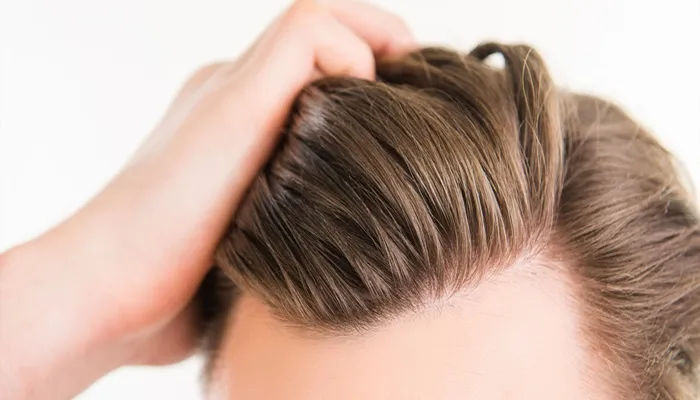Hair transplantation is a popular and effective solution for those experiencing hair loss. However, the success of the procedure doesn’t end with the surgery itself. Post-transplant care plays a crucial role in ensuring that the transplanted hair grows thick, healthy, and natural-looking.
In this article, we will explore various strategies to thicken transplanted hair, from immediate post-operative care to long-term maintenance. By following these guidelines, you can maximize the results of your hair transplant and enjoy a fuller, more robust head of hair.
Understanding the Hair Transplant Process
Before diving into how to thicken transplanted hair, it’s essential to understand the basics of the hair transplant procedure. There are two primary methods of hair transplantation:
Follicular Unit Transplantation (FUT): This method involves removing a strip of skin from the donor area (usually the back of the head), dissecting it into individual follicular units, and then transplanting these units into the recipient area.
Follicular Unit Extraction (FUE): In this method, individual hair follicles are extracted directly from the donor area and then implanted into the recipient area.
Both methods have their advantages, and the choice between them depends on various factors, including the patient’s hair loss pattern, donor hair availability, and personal preferences.
The Growth Cycle of Transplanted Hair
After a hair transplant, the transplanted hair follicles go through several phases of growth:
Anagen (Growth Phase): This is the active growth phase where hair grows from the follicle. Transplanted hair typically enters this phase after a few months.
Catagen (Transition Phase): A short phase where hair growth slows, and the hair follicle shrinks.
Telogen (Resting Phase): The hair follicle rests, and the hair may fall out. This is a normal part of the hair growth cycle.
Exogen (Shedding Phase): The old hair sheds, making way for new hair growth.
It’s important to note that after a hair transplant, the transplanted hair may initially shed within the first few weeks. This is a normal part of the process, and new hair growth will begin within a few months.
Immediate Post-Operative Care
The first few weeks after a hair transplant are critical for ensuring the success of the procedure. Proper care during this period can significantly impact the thickness and health of the transplanted hair.
Follow Your Surgeon’s Instructions: Your surgeon will provide specific post-operative care instructions. It’s crucial to follow these guidelines meticulously to avoid complications and promote healing.
Avoid Touching the Transplanted Area: Refrain from touching, scratching, or picking at the transplanted area. This can dislodge the grafts and affect their growth.
Keep the Scalp Clean: Gently wash your scalp as instructed by your surgeon. Keeping the area clean helps prevent infection and promotes healing.
Avoid Strenuous Activities: Avoid heavy lifting, intense exercise, and any activities that could increase blood pressure or cause sweating for at least a week after the procedure. This helps prevent swelling and reduces the risk of graft displacement.
Sleep with Your Head Elevated: Sleeping with your head elevated for the first few nights can help reduce swelling and promote healing.
Nutrition and Hair Health
A healthy diet plays a significant role in promoting hair growth and thickness. After a hair transplant, it’s essential to provide your body with the necessary nutrients to support the growth of transplanted hair.
Protein: Hair is primarily made up of a protein called keratin. Ensure your diet includes adequate protein from sources like lean meats, fish, eggs, beans, and nuts.
Vitamins and Minerals: Certain vitamins and minerals are essential for hair health, including:
Vitamin A: Promotes the production of sebum, which keeps the scalp moisturized. Found in carrots, sweet potatoes, and spinach.
Vitamin C: An antioxidant that helps in the production of collagen, which is essential for hair strength. Found in citrus fruits, strawberries, and bell peppers.
Vitamin E: Promotes blood circulation to the scalp, which is crucial for hair growth. Found in nuts, seeds, and leafy greens.
Biotin (Vitamin B7): Supports hair growth and thickness. Found in eggs, almonds, and whole grains.
Zinc: Helps with hair tissue growth and repair. Found in oysters, beef, and pumpkin seeds.
Iron: Prevents hair loss by ensuring proper blood flow to the hair follicles. Found in red meat, spinach, and lentils.
Omega-3 Fatty Acids: These healthy fats support scalp health and promote hair growth. Found in fatty fish, flaxseeds, and walnuts.
Stay Hydrated: Drinking plenty of water is essential for overall health, including hair health. Proper hydration helps keep the scalp moisturized and supports hair growth.
Conclusion
Thickening transplanted hair requires a combination of proper post-operative care, a healthy lifestyle, and ongoing maintenance. By following the guidelines outlined in this article, you can maximize the results of your hair transplant and enjoy a fuller, more robust head of hair. Remember that hair growth is a gradual process, and patience is essential. With the right care and attention, you can achieve the thick, healthy hair you desire.
If you have any concerns or questions about your hair transplant journey, don’t hesitate to reach out to your surgeon or a hair transplant specialist. They can provide personalized advice and support to help you achieve the best possible results.
Related topics:
- When Does Transplanted Hair Thicken?
- Does Transplanted Hair Thicken over Time?
- How Long Does Hair Take to Thicken Again?


